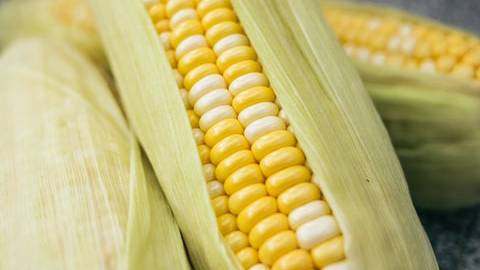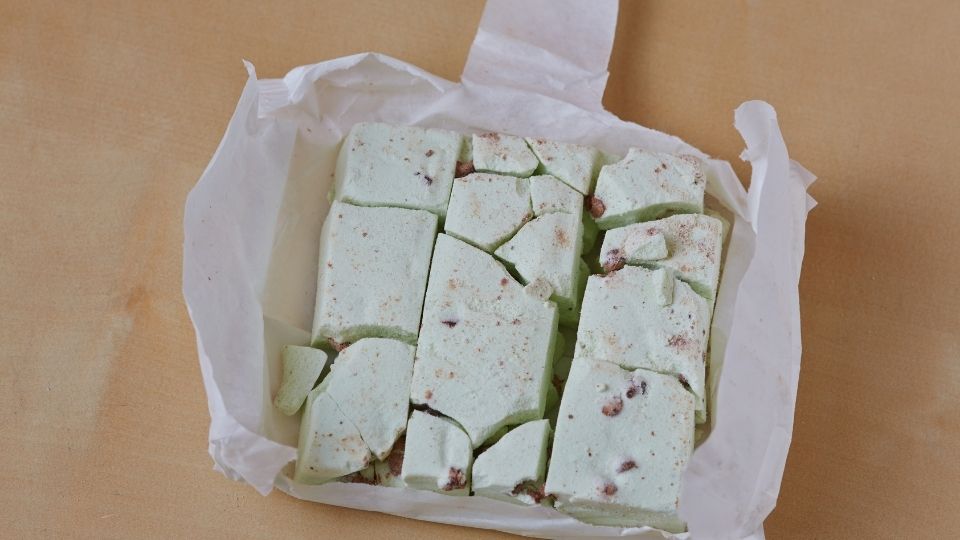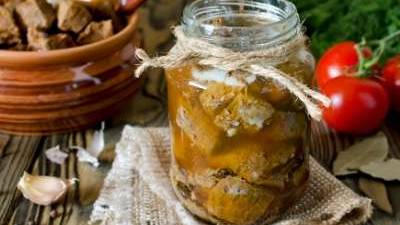How to Preserve Corn
Did You Know?
- Corn is not only a favorite vegetable, but it is also the source of corn starch, cornmeal, corn oil, corn syrup, bourbon, and laundry starch.
- To partake of corn at its very best flavor, take it directly from the plant to the pot of boiling water on the stove. Without proper storage, corn’s natural sugars start to diminish quickly, resulting in a loss of sweetness within a couple of days.
Selecting Fresh Corn
Look for fresh husks with good green husk color, silk ends that are free from decay or worm injury and stem ends that are not too discolored or dried. Select ears that are well covered with plump, not too mature kernels. Avoid ears with undeveloped kernels, ears with very large kernels and dark yellow kernels because they can be tough and not very sweet. It is important to pick corn and process it within 2-3 hours. The sugar in corn is quickly lost, so for optimum quality process as soon after picking as possible. If not able to process immediately, store corn in the refrigerator.
Freezing Corn
Corn keeps well frozen. There are three ways to freeze corn: corn on the cob, whole kernel and cream style. When freezing corn, do small amounts at a time. Shuck the corn, remove silks, trim ends, wash and then blanch.
Corn on the Cob
Blanching corn is an important step in the freezing process. To blanch, put several ears of corn into a gallon of boiling water. Blanching time starts when the water returns to a boil. Blanch small ears for 7 minutes, medium ears for 9 minutes and large ears for 11 minutes. Blanching is longer for corn on the cob because it needs the heat to inactivate enzymes in the cob.
After you have completed the blanching process, chill corn thoroughly in iced water. Cool long enough for cob to cool, but not so long as to become soggy. A good rule of thumb is to cool the corn as long as it took to blanch it.
Drain the water and wrap each ear in separate freezer film or freezer foil. You can put several ears in a freezer bag. Try to remove excess air. Label with date and contents. Freeze at 0°F or lower.
Whole Kernel
Blanch for 4 minutes, and then chill. Drain the water. Cut off the kernels to about two-thirds depth.
A corn cutter can be purchased through the Internet or from a store that sells kitchen equipment. For ease, drive a clean nail through a cutting board and skewer an ear of corn on the nail. Push the cutter down the cob with one easy stroke. Kernels can also be cut off the cob using a sharp knife.
Pack the corn tightly into containers or freezer bags, leaving about a half inch head-space on top. Seal bags or packages and label with the date and contents. Freeze in a freezer set at 0°F. Allow air circulation in the freezer so the corn can freeze quickly.
Cream Style Corn
Cut the corn at about the center of the kernels and then scrape the cob with the back of the knife to help remove the juice from the cob. Cook the corn in a double broiler. Heat and stir for about 10 minutes or until thickened.
Cool the corn quickly by putting the pan in an ice bath. Stir the corn until it has cooled. Package the corn in airtight containers leaving about a half inch headspace on the top. Label with date and contents. Freeze immediately in a freezer set at 0°F.
Canning Corn
Corn can be canned as whole kernel or cream style. Slight differences in preparation result in very different processing times. When canning you must follow tested recipes, such as the following, for a safe product.
Whole Kernel
Select ears containing slightly immature kernels, or of ideal quality for eating fresh. Canning of some sweeter varieties or too immature kernels may cause browning. Can a small amount. Check color and flavor before canning large quantities. Husk corn, remove silk, and wash. Blanch 3 minutes in boiling water. Cut corn from cob at about 3/4 the depth of kernel. CAUTION: Do not scrape cob.
Hot pack – To each quart of kernels in a saucepan, add 1 cup of hot water. Heat to boiling and simmer 5 minutes. Add 1 teaspoon salt per quart to the jar, if desired. Fill jars with corn and cooking liquid, leaving 1-inch headspace. Adjust lids and process.
Raw pack – Fill jars with raw kernels, leaving 1-inch headspace. Do not shake or press down. Add 1 teaspoon of salt per quart to the jar, if desired. Add fresh boiling water, leaving 1- inch headspace. Adjust lids and process.
Processing Times at Different Altitudes for Whole Kernel Corn in Dial Gauge and Weighted Gauge Pressure Canners
| Process times at altitudes of: | |||||||||
|---|---|---|---|---|---|---|---|---|---|
| Dial Gauge Pressure Canners | Weighted Gauge | ||||||||
| Style of Pack | |||||||||
| Jar Size | Process Time | 0-2,000 ft | 2,001-4,000 ft | 4,001-6,000 ft | 6,001-8,000 ft | 0-1,000 ft | Above1,000 ft | ||
| Hot and Raw | Pints | 55 min | 11 lb | 12 lb | 13 lb | 14 lb | 10 lb | 15 lb | |
| Quarts | 85 min | 11 lb | 12 lb | 13 lb | 14 lb | 10 lb | 15 lb | ||
Cream Style Corn
Select ears containing slightly immature kernels, or of ideal quality for eating fresh. Husk corn, remove silk, and wash ears. Cut corn from cob at about the center of kernel. Scrape remaining corn from cobs with a table knife.
Hot pack –To each quart of corn and scrapings in a saucepan, add two cups of boiling water. Heat to boiling. Add 1/2 teaspoon salt to each jar, if desired. Fill pint jar with hot corn mixture, leaving 1-inch headspace.
Processing Times at Different Altitudes for Cream Style Corn in Dial Gauge and Weighted Gauge Pressure Canners
| Process times at altitudes of: | |||||||||
|---|---|---|---|---|---|---|---|---|---|
| Dial Gauge Pressure Canners | Weighted Gauge | ||||||||
| Style of Pack | |||||||||
| Jar Size | Process Time | 0-2,000 ft | 2,001-4,000 ft | 4,001-6,000 ft | 6,001-8,000 ft | 0-1,000 ft | Above1,000 ft | ||
| Hot | Pints | 85 min | 11 lb | 12 lb | 13 lb | 14 lb | 10 lb | 15 lb | |
Note: Do not can cream style corn in quart jars.
Pickling
Corn Relish
- 10 cups fresh whole kernel corn
- (16 to 20 medium-size ears), or six 10-ounce packages of frozen corn 2 1/2 cups diced sweet red peppers
- 2 1/2 cups diced sweet green peppers
- 2 1/2 cups chopped celery
- 1 1/4 cups diced onions
- 1 3/4 cups sugar
- 5 cups vinegar (5%)
- 2 1/2 tbsp canning or pickling salt
- 2 1/2 tsp celery seed
- 2 1/2 tbsp dry mustard
- 1 1/4 tsp turmeric
Yield: About 9 pints
Procedure: Boil ears of corn 5 minutes. Dip in cold water. Cut whole kernels from cob or use six 10-ounce frozen packages of corn. Combine peppers, celery, onions, sugar, vinegar, salt, and celery seed in a saucepan. Bring to boil and simmer 5 minutes, stirring occasionally.
Mix mustard and turmeric in 1/2 cup of the simmered mixture. Add this mixture and corn to the hot mixture. Simmer another 5 minutes. If desired, thicken mixture with flour paste (1/4 cup flour blended in 1/4 cup water) and stir frequently. Fill jars with hot mixture, leaving 1/2inch headspace. Adjust lids and process.
Processing times at different altitudes for Pickled Corn Relish in a boiling water canner
| Process times at altitudes of: | ||||
|---|---|---|---|---|
| Style of pack | Jar size | 0-1,000 ft | 1,001-6,000 ft | Above 6,000 ft |
| Hot | Half-pints or Pints | 15 min | 20 min | 25 min |
Drying Corn
Corn can be preserved by drying, however this is the least commonly used method today. Select tender, mature sweet corn. Husk and trim. Blanch: fill a large pot two-thirds full of water, cover and bring to a boil. Place several ears in a wire basket and submerge into the water. Blanch for 4-5 minutes. Or you may steam blanch for 5-6 minutes. To steam blanch use a deep pot with a close-fitting lid and a wire basket that allows the steam to circulate freely around the ears of corn. Add water to the pot and boil. Make sure the water doesn’t come in contact with the ears.
Cut kernels off cob using a corn cutter for efficiency. Immediate dry in a dehydrator at 140 degrees F for 1-2 hours. Vegetables should be crisp/crunchy when they are completely dried. When dried adequately, corn will shatter if hit with a blunt object.
Store corn in a cool, dry place. Pack in containers that prevent moisture and insects from getting into the corn. Glass jars, metals cans or boxes with tightly fitted lids or freezer cartons make good containers for storing dried foods. Heavy-duty plastic bags are acceptable but are not pest proof.
A good rule is to pack foods in amounts that will be used in a recipe. Every time a package is re-opened the food is exposed to air and moisture and its quality decreases.
Rehydrating Dried Corn
Two methods are recommended. The dry corn can go directly into boiling water or broth, or the corn can be soaked in cold water 1 to 2 hours prior to use. If soaked for a longer period of time, it should be refrigerated. The boiling method speeds up the soaking time.
Storage
Well packaged, frozen corn can be held up to 9 months at 0°F. Canned corn held at 40°F will maintain quality for 6 years, at 70°F it will keep for 3 years and at 90°F it will keep for only 18 months before losing quality.
Nutrition
Corn is a good source of carbohydrates and food energy. Yellow corn has vitamin A and all corn has minerals and protein. Fresh corn is 74% water and has 85 calories per ear. Canned corn has 170 calories per cup.
References
- Andress, Elizabeth L., and Judy A. Harrison. 1999. So Easy to Preserve, 4th Ed. Cooperative Extension Service, University of Georgia. Athens, Georgia.
- Complete Guide to Home Canning (Agriculture Information Bulletin No. 539). 2015. USDA & Extension Service. http://nchfp.uga.edu/publications/usda/INTRO_HomeCanrev0715.pdf
- DeLong, Deanna. How to Dry Foods. 1979. HP Books, Tucson, Arizona. Georgia Extension Tele-Tips.
- Section 5. Subsistence. Department of Defense 4145.19-R-1, 1979.
Authors
Charlotte Brennand, Heidi Leblanc, Paige Wray
Related Research









